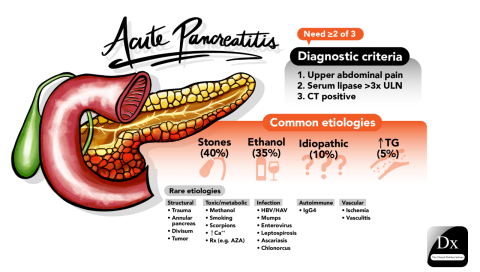U.S. egg prices have soared to a staggering new record high, reaching $6.23 per dozen last month, defying earlier predictions of a decline. Despite a substantial drop in wholesale egg prices and no reported outbreaks of bird flu affecting egg farms, consumers are feeling the pinch as the Consumer Price Index indicates little short-term relief. The upward price trend comes as demand for eggs typically spikes leading up to Easter, which falls on April 20 this year. Experts had anticipated that lower wholesale prices would translate into more affordable consumer egg prices, but this hasn’t occurred as quickly as hoped. With the ongoing egg cost fluctuations, many are left wondering when, if at all, they will see lower prices at their local grocery stores.
The current landscape for egg costs in the United States reflects a complex interplay of market dynamics and external factors. With escalating consumer pricing impacting household budgets, it’s essential to explore the underlying egg price trends shaping this sector. Additionally, the recent bird flu impact on the poultry industry has resulted in significant fluctuations in supply, causing ongoing concerns for producers and consumers alike. As the marketplace adjusts, wholesale egg prices have experienced a notable decline that many hoped would bring relief to shoppers. However, the efficiency of this transition from wholesale to retail remains a topic of contention among industry experts and consumers.
Understanding the Recent Surge in U.S. Egg Prices
U.S. egg prices have skyrocketed recently, reaching an astounding average of $6.23 per dozen last month. This surge defies expectations, particularly as President Trump had previously indicated that prices would stabilize amidst a decline in wholesale prices. Economic analysts point out that high consumer demand for eggs, particularly leading up to Easter, has kept prices elevated despite the drop in production costs. It appears that the market dynamics have not been favorable for consumers hoping to see some relief from inflated prices in the immediate term.
The situation can be further complicated by the residual effects of the recent bird flu outbreaks that have heavily influenced egg supplies. With millions of egg-laying hens culled at the onset of the outbreaks, recovery in production has been slow. While wholesale prices began to dip, grocery stores have been hesitant to pass those savings onto consumers quickly. As demand remains high, it is uncertain when shoppers can expect to see any significant reductions in consumer egg prices.
Impact of Bird Flu on Egg Price Trends
The ongoing bird flu crisis has had a profound impact on egg price trends in the U.S. Over 30 million hens were culled earlier this year to control the spread of the disease, which has severely disrupted the egg supply chain. Recent reports indicate that while fewer hens were culled in March, producers are still working to rebuild their flocks and restore production levels. As Jada Thompson from the University of Arkansas highlighted, the lengthy recovery process means that many farms are not able to return to pre-flu production capacities in a timely fashion.
Currently, there are approximately 285 million hens laying eggs nationwide, significantly down from the pre-outbreak levels. With ongoing monitoring and preventative measures in place, the hope is to stabilize flock sizes and ultimately the egg supply. However, until production meets demand, egg cost fluctuations are likely to continue as a defining feature of the market. Consumers are left navigating these changes, and many are already opting for alternatives as prices remain high.
Wholesale Egg Prices vs Consumer Egg Prices: What’s the Difference?
Understanding the difference between wholesale and consumer egg prices is crucial for anyone following the egg market trends. Wholesale prices reflect the cost that retailers pay for bulk egg shipments, which often fluctuate based on overall supply and demand as well as external factors like disease outbreaks and market conditions. Conversely, consumer egg prices represent what shoppers pay at the checkout, which may not always correlate directly with wholesale pricing trends due to various other factors.
For example, while recent data indicates that wholesale prices have begun to decrease, consumer prices have not followed suit immediately. This discrepancy can be attributed to grocery stores taking time to adjust their retail pricing in response to market changes. Therefore, consumers encountering high egg prices at their local markets may not yet benefit from the recent drops in wholesale costs. This situation emphasizes the complexity of the egg market, influenced by production challenges, demand spikes, and retailer pricing strategies.
Regional Variations in Egg Prices
When considering U.S. egg prices, regional variations play a significant role that affects consumers across different states. For instance, data indicates notable differences in prices based on local regulations and the impact of bird flu. In urban centers such as San Francisco, cage-free eggs can sell for exorbitant prices up to $9.99 per dozen, while in other regions, like Omaha, Nebraska, the same products may be available for as low as $4.97. These discrepancies highlight how local supply challenges and market preferences shape pricing.
Moreover, the impact of state regulations, such as those mandating cage-free production, can lead to higher retail prices in compliance-focused markets. As consumers navigate these regional price variations, it’s clear that understanding the local context is crucial for making informed purchasing decisions. As the egg supply stabilizes and production ramps up, these regional pricing disparities may diminish, but for now, price shopping remains essential for cost-conscious shoppers.
Future Projections for Egg Prices
Looking ahead, the outlook for egg prices in the U.S. appears cautiously optimistic, with expectations of a gradual decline through the spring as production increases. Industry analysts anticipate that as farms recover from the bird flu outbreaks and more hens return to laying, the market should stabilize, which may lead to lower consumer egg prices. This change would come as a relief for many families who have been enduring the impacts of rising food costs in their grocery bills.
Despite the hopeful projections, industry experts caution that unforeseen circumstances could still affect the egg market. Depending on factors such as further bird flu outbreaks or fluctuations in consumer demand, the situation could remain fluid. As the egg producers continue to face scrutiny over recent price hikes, transparency in their pricing strategies will be critical to regain consumer trust. The overarching theme remains that while future reductions in egg prices are anticipated, the road to price stabilization is contingent on many moving parts within the agricultural and retail sectors.
Frequently Asked Questions
What are the current U.S. egg prices and trends?
As of March 2023, U.S. egg prices reached a record high of $6.23 per dozen. Recent trends indicate a gradual decline, with prices averaging $5.51 in late March after falling from $5.98 earlier that month. However, prices vary significantly by region and can be influenced by factors such as bird flu outbreaks and local regulations.
How has the recent bird flu impacted egg prices in the U.S.?
The bird flu significantly impacted U.S. egg prices, especially during January and February, when over 30 million egg-laying hens were culled to prevent the disease’s spread. While only 2.1 million birds were culled in March, the effects of earlier outbreaks have led to ongoing fluctuations in egg supply and prices.
What are the wholesale egg prices in the U.S. currently?
As of late March 2023, wholesale egg prices are decreasing and have started to affect retail prices. Experts suggest that while wholesale prices dropped significantly, it may take time for these reductions to translate into lower consumer prices due to how grocery stores manage inventory.
Will consumer egg prices decrease in the near future?
Experts anticipate that consumer egg prices may decline further later this spring due to falling wholesale prices. However, ongoing factors such as bird flu recovery and supply chain issues may affect the timeline for consumers to see these reductions at the checkout.
What are the reasons behind egg cost fluctuations in the U.S.?
Egg cost fluctuations are influenced by various factors including bird flu outbreaks, seasonal demand, wholesale price changes, and regional supply circumstances. For example, high demand leading up to Easter often affects pricing, as do regional regulations that require cage-free egg production.
How much variation is there in egg prices across the U.S.?
There is considerable variation in U.S. egg prices, with cage-free eggs in San Francisco priced as high as $9.99 per dozen, compared to $4.97 per dozen in Omaha, Nebraska. Factors such as local demand and state regulations contribute to these discrepancies.
What effect do large egg producers like Cal-Maine Foods have on egg prices?
Large egg producers such as Cal-Maine Foods play a significant role in the U.S. egg market, supplying about 20% of the country’s egg production. Their pricing strategies and productivity can influence overall egg prices, and recent antitrust investigations into their practices may lead to increased scrutiny and impact future pricing.
| Key Factors | Details |
|---|---|
| Current Egg Price | The average price of eggs hit a new high of $6.23 per dozen. |
| Wholesale Price Trends | Wholesale egg prices began to decrease only in mid-March, which likely did not impact retail prices immediately. |
| Bird Flu Impact | Only 2.1 million birds were culled in March, with no egg farms affected, contrasting earlier months where 30 million were affected. |
| Supply Issues | The total number of laying hens decreased from 293 million to 285 million, down from over 315 million before the outbreaks. |
| Regional Price Variability | Prices vary significantly, with cage-free eggs in San Francisco reaching $9.99, and as low as $4.97 in Omaha. |
| Consumer Behavior | Some consumers are opting for plastic eggs for Easter to cope with higher prices. |
| Future Outlook | Predictions indicate a potential decline in U.S. egg prices this spring, alongside scrutiny of major producers. |
Summary
U.S. egg prices have reached alarming heights, currently averaging $6.23 per dozen, exacerbated by a number of complex factors. While wholesale prices have started to decline, retail prices are slow to follow, leaving consumers feeling the pinch at grocery stores. The underlying challenges such as bird flu culling and supply reductions further complicate the situation. With Easter approaching, demand remains high, yet shoppers are finding creative ways to celebrate with rising costs. As we look to the coming months, a decline in prices is anticipated, but continued scrutiny of egg producers will be necessary to ensure fair pricing moving forward.
The content provided on this blog (e.g., symptom descriptions, health tips, or general advice) is for informational purposes only and is not a substitute for professional medical advice, diagnosis, or treatment. Always seek the guidance of your physician or other qualified healthcare provider with any questions you may have regarding a medical condition. Never disregard professional medical advice or delay seeking it because of something you have read on this website. If you believe you may have a medical emergency, call your doctor or emergency services immediately. Reliance on any information provided by this blog is solely at your own risk.







